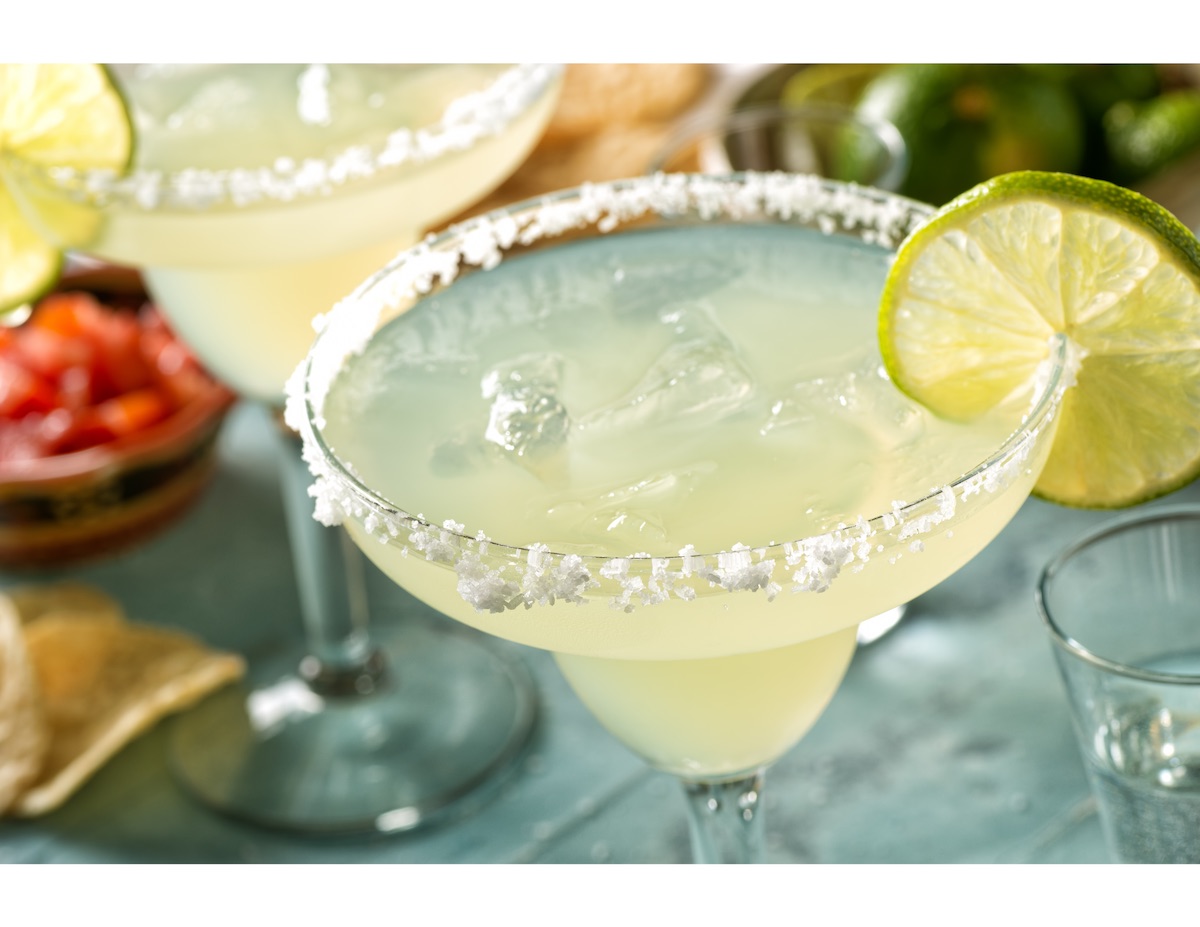The Margarita is arguably the most popular cocktail in the USA. It’s the obvious summer go-to drink, and you’ll find it everywhere: on the menu at dive bars, haute cocktail destinations, Mexican and non-Mexican restaurants. According to Vinepair, it has ranked as the No. 1 most ordered tequila cocktail in the world since 2015 and as the fifth most popular drink worldwide.
But not everyone agrees on the Margarita recipe. Sure, there’s always tequila (except if you use mezcal), lime juice (unless you use lemon and/or other fruits like this guy), and a sweetener (simple syrup, agave nectar, Cointreau, all of the above?).
Below, we identify every controversial ingredient and show you the videos that demonstrate each approach. Armed with this comprehensive background, you will not only know how to make a killer drink this summer, you’ll have a cocktail conversation starter — or ender — anywhere you go.
History and Basic Recipe
First, let’s define terms. We know the margarita was created sometime in the 1930s or 1940s. Unfortunately, there are a half dozen origin stories. Read Difford’s Guide for a thorough analysis of all the claims.
Second, if you believe that a Margarita must always include mango, strawberry, raspberry, blackberry, pineapple, cucumber, or watermelon, you are not describing the drink as it is known around the world. Variations are variations.
How Much Sweetness?
The classic 3-2-1 ratio assumes there will be 3 parts tequila, 2 parts orange liqueur (Grand Marnier or Cointreau), and 1 part lime juice. Some folks insist you use triple sec like Cointreau, others suggest you add more sweetness with two teaspoons of superfine sugar or ½ ounce of simple syrup or agave nectar.
Malcolm Reed, of HowtoBBQright, adds less tequila (a shot or 1.25 ounces) and more sweetener (half shot of Cointreau and a half shot of simple syrup) — plus a splash of beer just because.
Ming Tsai uses a 2-1-1 ratio (and no orange liqueur):
- 2 part tequila
- 1 part lime juice
- 1 part simple syrup
Grand Marnier vs Triple Sec vs Cointreau vs Curaçao
Most people agree you need “orange liqueur” in this cocktail. But there are four types of the stuff:
- Curaçao is a liqueur flavored with the dried peel of the bitter orange laraha, a citrus fruit grown on the Dutch island of Curaçao.
- Triple sec is pretty much the same thing but usually made by many companies of French origin.
- Cointreau is just one type of triple sec.
- Grand Marnier is one type of Cognac (brandy).
According to Bevvy: “Curaçao is more frequently pot-distilled with brandy, cognac, or sugar cane spirit and has a sweeter quality and a darker coloring. Triple sec is more frequently column-distilled with neutral grain spirit and has a drier quality and a clear appearance.”
If you want a deeper dive, read this article. Grand Marnier will taste sweetest of them all. In the video below, Rob’s Home Bar test drives multiple variations on the margarita using all of the orange-oriented ingredients above.
No Orange Liqueur at All?
In the early 1990s, a bartender named Julio Bermejo invented this version of a margarita at Tommy’s in San Francisco. According to Liquor.com, “Tommy’s version is characterized by its lack of orange liqueur. (Some bartenders argue that eliminating the orange liqueur makes this version not a Margarita. But that is a story for another time.) Rather than using the sweetener to balance the tequila and lime, Bermejo relies solely on agave nectar, made from the same plant that produces tequila. This simple swap creates a cocktail that tastes similar to the original and saves the drinker a few calories. It became emblematic of the lighter, fresher style of eating and drinking that was taking place in California around the end of the twentieth century and still drives much of the culinary and bar scene today.”
Is it ok to omit orange liqueur? Yes, but call it a Tommy’s Margarita.
https://www.instagram.com/reel/CG-dYOflQNr/?utm_source=ig_web_copy_link
Blanco vs Reposado Tequila
The vast majority of bartenders will use a blanco AKA silver AKA white tequila when making a Margarita. They rely on a spirit bottled directly after being distilled — rarely aged. Some purists believe there is a vegetal quality in silver terquila that needs to shine through in the cocktail. Cocktail maven Eben Freeman, on the other hand, described the perfect margarita in a video he made for Epicurious, using reposado tequila that has “mellowed out” just enough to warrant being in his drink.
Mezcal Instead of Tequila?
If you like smokiness as a flavor, you’ll like a mezcal margarita. It adds another layer or two; some people say there’s a funkiness as well. This recipe also adopts the “Tommy’s Margarita” approach: no orange liqueur.
Fresh Lime Juice vs Rose’s Lime Juice?
The concept is simple: Use fresh lime instead of the bottled alternative, Rose’s Lime Juice (patented in 1867). This concentrate includes a sweetener, which some people like, but there are many other (better) ways to add sugar (see sweetener conversation). That said, if you don’t have fresh citrus or need to cut corners (or save time), Rose’s will work.
In the Preppy Kitchen recipe, John Kanell says “Never use the bottled stuff, that’s sacrilegious.”
For the Rim: Table Salt vs Kosher Salt vs Sea Salt
Before you mix the ingredients, you’ll need to prep your area. This includes a plate of salt destined for the rim of the glass — to contrast the lime and sweetness. A few things to note:
- Don’t use table salt if possible. It’s too fine, it will mix with the drink too quickly. It will taste too salty.
- Do use kosher or sea salt. Bigger flakes, less absorption, better balance.
- One last detail: When preparing the glass, moisten around the edges with lime juice. But DO NOT simply press the whole mouth of the glass into a mound of salt because then you will have salt both inside and outside on the rim. Too much salt. Instead, roll the outer edge of the glass in the salt and you will have the proper proportions — outside salt only. And if you’re not sure how the drinker you’re making a margaritafor likes it, add salt only to half the glass.
Watch how Eben does it:
See more beverages.





 Photo by
Photo by